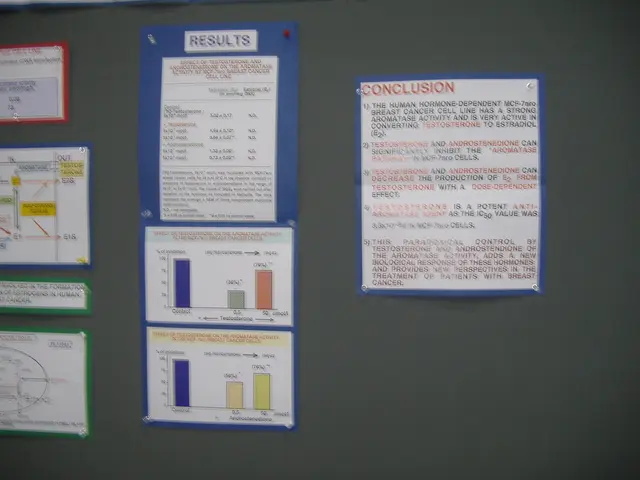Understanding the Concept of Obesity
Obesity, a health condition characterized by excessive body fat, has become a significant global concern, with the rate nearly tripling since 1975. In many countries, including the United States and parts of Europe, obesity rates have reached epidemic proportions. Understanding the causes and risk factors of obesity is essential for identifying individuals who may be more susceptible to weight gain and for developing effective strategies for prevention and management.
Recognizing the symptoms of obesity is vital for early intervention and management. Physical symptoms include excess body fat, difficulty breathing, joint pain, and fatigue, while psychological symptoms may include depression, anxiety, and low self-esteem. Obesity is closely linked to various health complications, such as type 2 diabetes, cardiovascular diseases, sleep apnea, and certain cancers.
The most effective strategies for preventing and treating obesity in the United States combine lifestyle interventions, policy and environmental support, individualized therapies, and emerging medical treatments.
Promoting Physical Activity and Healthy Nutrition
Increasing access to safe places for physical activity, such as parks, walking and biking routes, and early education settings, is crucial. Encouraging regular physical activity aligned with national guidelines and balanced diets tailored to individual needs and preferences rather than highly restrictive diets is also essential. Lifestyle counseling remains foundational, focusing on improving nutrition and exercise habits.
Holistic and Individualized Approaches
Treatments consider hormonal and metabolic factors, such as in patients with polycystic ovary syndrome (PCOS) or metabolic syndrome, emphasizing balanced diets, supplementation, and managing oxidative stress. Personalized interventions, such as digital health programs delivering tailored guidance to parents of young children, have shown promise in preventing childhood obesity, especially in vulnerable populations like food-insecure households.
Policy, Community, and Environmental Strategies
CDC initiatives like Active People, Healthy Nation engage communities and states to implement policies that improve access and opportunities for physical activity and healthy eating. Community design to connect daily destinations with pedestrian and transit networks encourages active transportation and integrates physical activity into daily routines.
Medical and Surgical Treatments
Beyond lifestyle change, a newer generation of obesity medications and bariatric surgery are important components for individuals with severe obesity or those not achieving adequate results through lifestyle changes alone. Endoscopic procedures, such as reducing stomach size or altering digestion, are less invasive alternatives to traditional surgery for weight loss.
Additional Supportive Measures
Managing stress, ensuring adequate sleep, and providing broad awareness and resources empower individuals to maintain healthy behaviors and weight long term.
Environmental influences, including food deserts, marketing of unhealthy foods, and lack of community resources, can also contribute to obesity. Together, these strategies emphasize prevention through healthy habits from early life, community and policy support to facilitate these behaviors, personalized and holistic treatment approaches, and advanced medical options when appropriate. This multifaceted approach is necessary due to obesity’s complex biological, environmental, and social factors.
- Obesity, a significant global concern, is characterized by excessive body fat, with rates tripling since 1975.
- In many countries, obesity has reached epidemic proportions, including the United States and parts of Europe.
- Understanding causes and risk factors of obesity helps identify individuals more susceptible to weight gain.
- Recognizing obesity symptoms is vital for early intervention, with physical symptoms including excess body fat and difficulty breathing.
- Psychological symptoms may include depression, anxiety, and low self-esteem.
- Obesity is linked to various health complications such as type 2 diabetes, cardiovascular diseases, sleep apnea, and certain cancers.
- Combining lifestyle interventions, policy, and environmental support, individualized therapies, and emerging medical treatments are effective for preventing and treating obesity in the United States.
- Safe places for physical activity, like parks and walking/biking routes, are crucial.
- Encouraging regular physical activity aligned with national guidelines along with balanced diets tailored to individual needs and preferences is important.
- Lifestyle counseling remains foundational, focusing on improving nutrition and exercise habits.
- Holistic approaches consider hormonal and metabolic factors like PCOS and metabolic syndrome.
- Balanced diets, supplementation, and managing oxidative stress are essential for these patients.
- Personalized interventions like digital health programs for young children show promise in preventing childhood obesity, especially in food-insecure households.
- CDC initiatives like Active People, Healthy Nation engage communities and states to implement policies for physical activity and healthy eating.
- Community design connecting daily destinations with pedestrian and transit networks encourages active transportation and integrates physical activity into daily routines.
- Obesity medications, bariatric surgery, and endoscopic procedures are important components for individuals with severe obesity.
- Less invasive alternatives like reducing stomach size or altering digestion are available for weight loss.
- Managing stress, ensuring adequate sleep, and providing resources empower individuals to maintain healthy behaviors and weight.
- Environmental factors like food deserts, marketing of unhealthy foods, and community resource scarcity can contribute to obesity.
- This multifaceted approach is necessary due to obesity's complex biological, environmental, and social factors.
- Prevention through healthy habits from early life is crucial.
- Community and policy support helps facilitate these habits.
- Personalized and holistic treatment approaches are beneficial for managing obesity effectively.
- Advanced medical options are available when necessary.
- Climate change, mental health, and chronic diseases like cancer, respiratory and digestive conditions are other crucial areas in medical-conditions and health-and-wellness.
- Autoimmune disorders, eye-health, hearing, and Skin-care are essential aspects of health-and-wellness, too.
- Fitness-and-exercise, cardiovascular-health, nutrition, and weight-management contribute to overall health-and-wellness.
- Medicare, cbd, neurological-disorders, and environmental-science are interrelated topics under the umbrella of health-and-wellness.
- Finance, offering insights on investing, wealth-management, and personal-finance, is an integral component of lifestyle and daily life management.
- Gadgets, data-and-cloud-computing, technology, artificial-intelligence, relationships, pets, travel, and entertainment are aspects of modern life that can influence health-and-wellness, personal-growth, and overall personal-finance.




